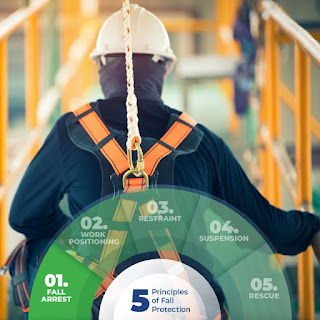Types Of Roof Safety Systems& Their Uses
Roofing-related deaths and injuries are nothing new. This continues to be a problem area that hashad terrible long-term impacts on people and families throughout the roofing sector, despite the development of much better roofing safety technology.
The Occupational Safety and Health Administration (OSHA) has authorised a wide variety of roof devices suitable for use on roofs of varying sizes and inclines. If you want to keep your workers safe and protect susceptible areas of the roof from being damaged, you need to be prepared for any kind of roof that you might encounter. Here are three types of roof safety devices to consider for the protection of your staff.
Roofing safety nets
Workers who slip and fall are caught by roofing safety
nets, which are a sort of fall arrest device. OSHA mandates the use of safety
nets when operating at heights more than 25 feet or in situations when the
following are unavailable:
Ladders
Scaffolds
platform catches
interim floors
securing lines
security belts
Roofing guardrail systems
Both low-slope and steep-slope roofs may utilise
roofing guardrail devices to prevent falls. These are obviously worth having
available whether you work on commercial or residential roofing.Residential
guardrails feature toe boards to prevent tools from sliding through the
crevices and falling off the roof, whereas commercial guardrail systems have
toe boards but otherwise serve the same function.Roofing guardrails must be
placed around hatches on commercial construction sites and are often utilised
around the building's perimeter.
Fall arrest systems
On rooftops with modest slopes as well as high slopes,
fall arrest devices are employed. They are the roof safety system that residential roofers most often favour. A fall arrest
system uses an anchor, a harness, and a lanyard to prevent a roofer from
falling from a roof.
You should use particular caution while reaching your
roof if there is an air conditioning
platforms Sydney CBD there. Never attempt to reach the roof on your own,
and be sure that any ladders or scaffolding you use are securely fastened. If
at all feasible, ask a companion to remain nearby so they can serve as a
spotter in case you fall or slide. Additionally, always use appropriate safety
gear, such as non-slip.




Comments
Post a Comment